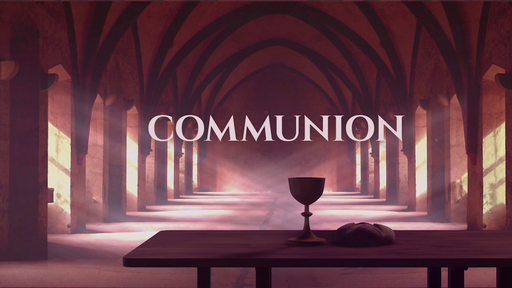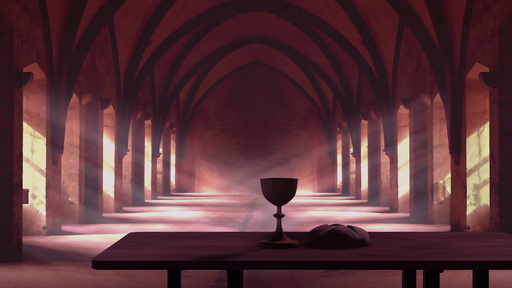The Light, the Garments, and the Altar: A Journey into God's Holy Presence
Torah Portions • Sermon • Submitted • Presented
0 ratings
· 8 viewsNotes
Transcript
Bible Passage: Exodus 27:20–30:10
Bible Passage: Exodus 27:20–30:10
Summary: This passage provides a detailed blueprint of the tabernacle's interior, focusing on the menorah's light signifying God's constant presence, the priestly garments symbolizing divine service, and the rituals of consecration that prepared the priests for their holy tasks. Each component illustrates the deep reverence and commitment required to approach a holy God, who desires to dwell among His people.
Teaching: The primary teaching here is that God provides the means for His people to know Him intimately and serve Him faithfully. Worship, consecration, and community service are essential practices that keep believers in alignment with God's call, showcasing how Old Testament principles remain relevant today in guiding our spiritual lives.
Big Idea: As God's chosen people, we are called to enter into His presence with reverence and dedication, reflecting His light into the world through our lives, while embracing the identity He has gifted us, which compels us to live as His priests and representatives.
1. Illuminate with Eternal Light
1. Illuminate with Eternal Light
Exodus 27:20-21
2. Embrace Your Sacred Identity
2. Embrace Your Sacred Identity
Exodus 28:1-30
3. Intercede with Integrity
3. Intercede with Integrity
Exodus 28:31-43
4. Consecrate with Commitment
4. Consecrate with Commitment
Exodus 29:1-37
4. Daily offerings of the lambs
4. Daily offerings of the lambs
Exodus 29: 38-46
5. The table of incense the smoke of the lambs
5. The table of incense the smoke of the lambs
Exodus 30:1-10
God commanded the Israelites to keep the lamp of the golden menorah burning continually with pure olive oil. This perpetual light symbolized the “light of creation,” the first light that God spoke into existence before the creation of the sun, moon, and stars. It also represented “God’s light”—His eternal presence, guidance, and life-giving power among His people.
The instruction to never let the menorah’s light go out underscored its role as an image of the “eternal light,” symbolizing God’s unceasing covenant faithfulness and His presence. More than that, it was an invitation for the priests and the nation of Israel to be “like” God by working to sustain the light. Just as God worked to bring forth the “light of creation” and order to the cosmos, Israel was called to be a light to the world, bringing God’s Kingdom and presence to all nations. The Tabernacle itself was a reflection of a heavenly truth—a sacred space built from earthly elements by men created in “God’s image.” Through their craftsmanship, obedience, and service, the people of Israel participated in God’s creative work, manifesting His presence on earth and pointing to His ultimate plan to restore all creation.
God instructed Moses to consecrate Aaron and his sons as priests and to clothe them in sacred garments made for “glory and beauty.” These garments included white linen robes symbolizing purity, righteousness, and the priest’s role in reflecting God’s holiness. The garments were adorned with gold, precious stones, and intricate embroidery that glittered in the light, representing heavenly splendor. By clothing men in such radiant attire, God symbolically brought the wonder of the heavenly realm to earth, making the priests appear like divine beings who mediated between God and His people.
The breastpiece of judgment was crafted with twelve precious stones, each engraved with the name of a tribe of Israel. The dazzling array of jewels symbolized the diversity and unity of God’s people, while their glittering brilliance evoked the beauty and order of the heavens. The use of gold and jewels signified the presence of God’s glory on earth, transforming the high priest into a living representation of heaven’s majesty.
The Urim and Thummim, placed within the breastpiece, remain somewhat mysterious, but they are often interpreted as sacred lots or objects used to discern God’s will. The names “Urim” (meaning “lights”) and “Thummim” (meaning “perfections”) suggest that they were associated with divine illumination and truth. Some scholars believe they were stones that, when cast or illuminated in some way, revealed a “yes” or “no” answer from God. Others suggest they may have been used in a more symbolic manner, representing the priest’s role in seeking and delivering God’s perfect judgment. Regardless of their exact nature, they functioned as a means by which the high priest could receive divine guidance in matters of national importance, underscoring the priest’s role as a mediator between God and Israel.
The glittering garments, with their heavenly imagery, and the Urim and Thummim together reinforced the idea that the high priest stood as a bridge between the divine and earthly realms, embodying God’s presence and bringing His will to the people.
God gave instructions for the completion of the high priest’s garments, emphasizing their sacred and symbolic significance. The robe of the ephod was to be made entirely of blue, symbolizing the heavenly realm, with its hem adorned with alternating golden bells and pomegranates crafted from blue, purple, and scarlet yarn. The golden bells ensured that the high priest could be heard when entering and leaving the Holy Place, signifying his life and ongoing ministry before God.
The turban was to have a gold plate inscribed with “Holy to the Lord”, signifying the priest’s consecration and role in bearing the sins of Israel, making the nation’s offerings acceptable before God. Additionally, linen undergarments were prescribed for Aaron and his sons to ensure modesty while performing their duties, underscoring the importance of purity in approaching God.
Together, these garments symbolized holiness, dignity, and the heavenly authority entrusted to the high priest. They highlighted the high priest’s role as a mediator between God and His people, clothed in divine splendor to reflect God’s presence on earth.
God provided the ritual for consecrating Aaron and his sons, setting them apart as “anointed ones” through the offering of perfect animals. These sacrifices were necessary for their sanctification, as only through the shedding of innocent life could they be made holy and prepared to serve in the Tabernacle. The continual offering of sacrifices reminded the people of a fundamental truth: because of the fall, death had entered the world. Yet, even though death is inevitable, God preserves and gives life to the innocent. The sacrifices symbolized that those who are innocent belong to God and, even in death, will find life in Him.
As the smoke of the offerings ascended, it represented the transformation of earthly elements into heavenly realities, signifying communion with God. The offerings were a shared meal between God and the priests, symbolizing a covenant relationship in which both heaven and earth participated. The priests consumed the sanctified meat of the offering, while the rich, fatty portions—the best parts—were entirely offered to God in the rising smoke. This sacred act taught the people that, although death was now a part of life, God would ultimately preserve the innocent and restore fellowship with His creation through His divine provision.
God commanded that a daily, never-ending sacrifice of two lambs be offered every morning and evening. This perpetual offering symbolized ongoing atonement and communion with God, ensuring that the relationship between God and His people remained constant. Through these continual sacrifices, God established a four-fold promise: He would meet and speak with His people, the Tabernacle and altar would be consecrated by His glory, the priests would be sanctified for their sacred duties, and He would dwell among the sons of Israel.
This daily ritual was a continual reminder of God’s covenant faithfulness and His role as their Redeemer. It recalled the death and consecration of the firstborn during the deliverance from Egypt and the miracle of the Passover, when God spared Israel through the blood of the lamb. By instituting this perpetual sacrifice, God reaffirmed His promise to dwell with His people so they would know that He is the Lord who delivered them and called them into covenant relationship with Him.
God commanded the construction of the final piece of Tabernacle furniture: the altar of incense. Positioned in front of the veil, just before the Holy of Holies, it was to receive incense offerings during the morning and evening sacrifices, coinciding with the slaughtering of the lambs. This was especially significant in the morning, when the lamb was slaughtered and Aaron trimmed the light of the menorah, as the incense was offered during this sacred time.
The incense offered on this altar symbolized the prayers of the people, rising as a sweet, heavenly fragrance to God. It was a reminder that the light, the blood, and the heavenly scent were precious to God, representing a holistic act of worship and unity with Him. The offering of incense, like the blood of the lamb and the light of the menorah, was a way for the people to share in God’s redemptive work and demonstrate their worthiness of His redemption, aligning with His divine purposes.
However, the incense altar also carried a reminder of Israel’s past failure, specifically the incident involving the “strange incense” offered by Nadab and Abihu (Leviticus 10:1-2). Their unauthorized offering of incense led to death entering the camp of Israel. The altar of incense, therefore, served not only as a symbol of worship but also as a form of atonement for that failure. It reminded the people of the need for obedience and reverence in their worship, ensuring that their offerings would be accepted by God in accordance with His instructions.
ADVERTISEMENT
Related Media
See moreRelated Sermons
See more

Roger Ferguson • 4 views


Roger Ferguson • 10 views



